Hybrid Technology Architecture Research is an ongoing program in pursuit of knowledge to integrate and harmonize hybrid technology architectures as a natural way of responding to changes in innovation.
Technology Architecture and Enterprise Architecture
In relation to enterprise architecture, technology architecture includes the following:
- Application systems
- Relationships between applications and data elements
- Technology infrastructure
Our research focus is on areas that are knowledge and skills intensive. These areas also represent fields that we have developed competencies in and which provide opportunities for innovation and skills transfer. The hype factor in IT is well known. With the emergence of each new technology or concept, come the evangalists that proclaim that this will replace and surpass everything else that has come along. Yet, the mainframe is still with us. Just as the kidney is but one part of a person's body, each new technology to emerge forms an element of the complex whole.
Integrated Portal Strategy and Evolving Web
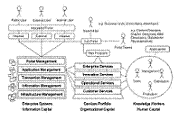 A portal strategy represents the development and implementation of a common online environment and the strategy to
extend the reach of the enterprise information systems across all boundaries using internet based technologies and systems architecture.
The portal is more than just a corporate website. It is dynamic and integrates all front and back office processes and information.
Enterprise architecture as a systems initiative needs to be tangible and visible.
The portal or gateway into the enterprise is an integrated and dynamic approach that represents the visible and tangible business
implementation of an enterprise systems architecture that provides the capability and infrastructure.
A portal strategy represents the development and implementation of a common online environment and the strategy to
extend the reach of the enterprise information systems across all boundaries using internet based technologies and systems architecture.
The portal is more than just a corporate website. It is dynamic and integrates all front and back office processes and information.
Enterprise architecture as a systems initiative needs to be tangible and visible.
The portal or gateway into the enterprise is an integrated and dynamic approach that represents the visible and tangible business
implementation of an enterprise systems architecture that provides the capability and infrastructure.
Web 2.0 and Web 3.0 represent the next and emerging evolution of the internet and world wide web. Where Web 2.0 is all about social networking and user-contributed content, Web 3.0 could easily be referred to as social networking and user-contributed content taken to the next level. Personal computing and social networking using a variety of devices such as cellphones, gaming consoles delivering services such as personal and business applications, consumer transactions, information on weather, news, messages, friends and anything else people can think of.
Enterprise portals will need to evolve to cater for not only delivering services to consumers but receiving services that are controlled by individuals. People will want more control over their information and send it to initiate service requests rather than filling out online forms to respond to service offerings. Technologies and approaches such as Asynchronous Javascripting and XML (AJAX), Service Orientated Architecture (SOA), Business Process Management, Metadata Management and Service Management are integral to the portal maturation process of Communication-Interaction-Transaction.
Asynchronous Javascripting and XML (AJAX)
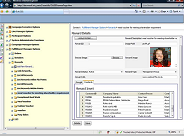 Asynchronous Javascripting and XML (AJAX) is an important area of focus as it is a key element of the application architecture for
Web 2.0 and Web 3.0 applications and services.
It is an open standard supported by most browsers and enables rich user interfaces and functionality.
A number of our application and software development projects utilising graduates and interns are supported by our
development of AJAX tools and the metadata based configuration systems.
XML is a key standard and has become the driver for bridging the gap between social internet based utilities
and enterprise transaction management. We are able to implement pure Service Orientated Architecture (SOA) based systems
that are consumed only by AJAX web applications and without any need for server pages.
Asynchronous Javascripting and XML (AJAX) is an important area of focus as it is a key element of the application architecture for
Web 2.0 and Web 3.0 applications and services.
It is an open standard supported by most browsers and enables rich user interfaces and functionality.
A number of our application and software development projects utilising graduates and interns are supported by our
development of AJAX tools and the metadata based configuration systems.
XML is a key standard and has become the driver for bridging the gap between social internet based utilities
and enterprise transaction management. We are able to implement pure Service Orientated Architecture (SOA) based systems
that are consumed only by AJAX web applications and without any need for server pages.
Service Orientated Architecture (SOA)
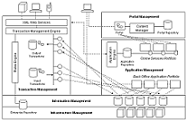 Once the hype around Service Orientated Architecture (SOA) declines, real SOA solutions and applications will emerge at the
heart of both social and enterprise systems.
This approach towards integrating systems is not new. What we know from transaction management systems and processes remain relevant.
The advent of standards such as web services and XML have helped us to address the interoperability issues.
Once the hype around Service Orientated Architecture (SOA) declines, real SOA solutions and applications will emerge at the
heart of both social and enterprise systems.
This approach towards integrating systems is not new. What we know from transaction management systems and processes remain relevant.
The advent of standards such as web services and XML have helped us to address the interoperability issues.
They have also enabled standardisation of information and putting the emphasis back on business and business process management. Project and service management will also be affected by this shift as will the focus on business to work smarter rather than harder. The use of XML web services can improve our focus on the business architecture by resolving interoperability problems and making the technology platform less of an issue in system to system integration. SOA requires us to think beyond the notion of one dominant platform or technology. We can now think in terms of an ecosystem where inherently complex systems can be managed. Transition and change can take place more seamlessly and naturally rather than in disruptive big bangs.
Metadata Management
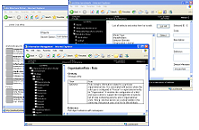 We have developed Computer Aided Software Engineering (CASE) tools with document and code generators for a variety of software programming languages.
This focus has matured towards the discipline of managing "data about data" or metadata rather than in the tools and software architectures.
Metadata management is also not new but it is playing an increasingly important role in managing the state of information overload and
data quality management.
We have developed Computer Aided Software Engineering (CASE) tools with document and code generators for a variety of software programming languages.
This focus has matured towards the discipline of managing "data about data" or metadata rather than in the tools and software architectures.
Metadata management is also not new but it is playing an increasingly important role in managing the state of information overload and
data quality management.
One of the most popular applications of metadata is in internet search engines. More importantly enterprises are moving from build intensive software development projects to mature management tools and applications that can be configured using metadata and where risks associated with software programming are reduced or eliminated without compromising on agility or responsiveness to change.
Service Management
 There is increasing alignment between Enterprise Architecture and Service Management using approaches such as
Information Technology Infrastructure Library (ITIL).
ITIL is specifically relevant to technology and infrastructure architecture.
There is increasing alignment between Enterprise Architecture and Service Management using approaches such as
Information Technology Infrastructure Library (ITIL).
ITIL is specifically relevant to technology and infrastructure architecture.
The change and configuration that leverages re-usability in an architecture needs to be managed. This can be achieved by managing the service life cycle. With enterprise architecture and service management information, capability and processes organisations can drastically improve their IT service delivery, technology infrastructure and operational management and business process automation.
Hybrid Environments
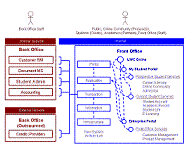 EA is platform neutral and is important in hybrid or mixed technology environments where the lack of EA can lead to chaos.
Most large enterprises cannot avoid the situation of supporting or maintaining an infrastructure and technology environment made up
of disparate and specialised systems.
EA is platform neutral and is important in hybrid or mixed technology environments where the lack of EA can lead to chaos.
Most large enterprises cannot avoid the situation of supporting or maintaining an infrastructure and technology environment made up
of disparate and specialised systems.
We believe the key is in skills and not technology. Working with platform technology partners, open standards, architecture frameworks and developing skills across multiple platforms, the complexity of any hybrid environment can be managed. The key is in developing platform independent models and platform specific models or reference architectures and implementations.